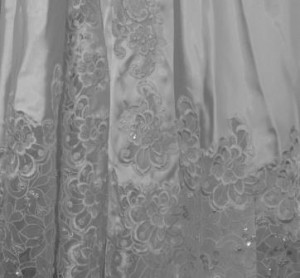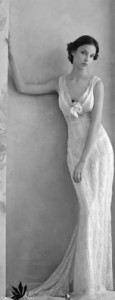As you may know from last week’s blog post, I was very taken with Marcus Sedgwick’s plot-driven approach to writing. Not that I wasn’t well-taught about structure by Greg Mosse on the West Dean MA, but I so enjoyed hearing it from another respected source. See Addy Farmer’s valuable piece for more on this.
Well now I am officially a Graduate Editorial Assistant – and that structure stuff really counts. There is no point in me line-editing the students’ work, however much they beg for it – and however easy I find it to do.
I’m going to use a dressmaking analogy to show what I mean. This comes to mind from my work on The Wedding Ghost which is currently in its first draft, and it applies just as much to me.
It is oh-so-easy to tinker with the embroidery, to reposition the sequins and if I’m honest, hope that all the sparkly and shiny things will distract the reader from the fact that it just isn’t working. No amount of beautiful metaphor or carefully wrought sentences full of euphony will cover up a great gaping plot hole.
I might have to unpick a seam or rearrange the darts across the bust and then what happens to all that bugle-beading? Far more important to deal with the underlying form first.
There will be those of you reading this who know just how easily distracted by shimmery surface detail I am and how I struggle with synopses, summaries and the like. I’d much rather tinker with the fiddly little bits.
But my job is to make it work, to make the story the right shape. The good thing is that this craft approach means it is irrelevant whether I’m dealing with some chic little cocktail dress, a witty take on contemporary life or the sideless surcoat of an historical romance. It’s the fit that counts.
If your current work-in-progress were an item of clothing, what would it be?




